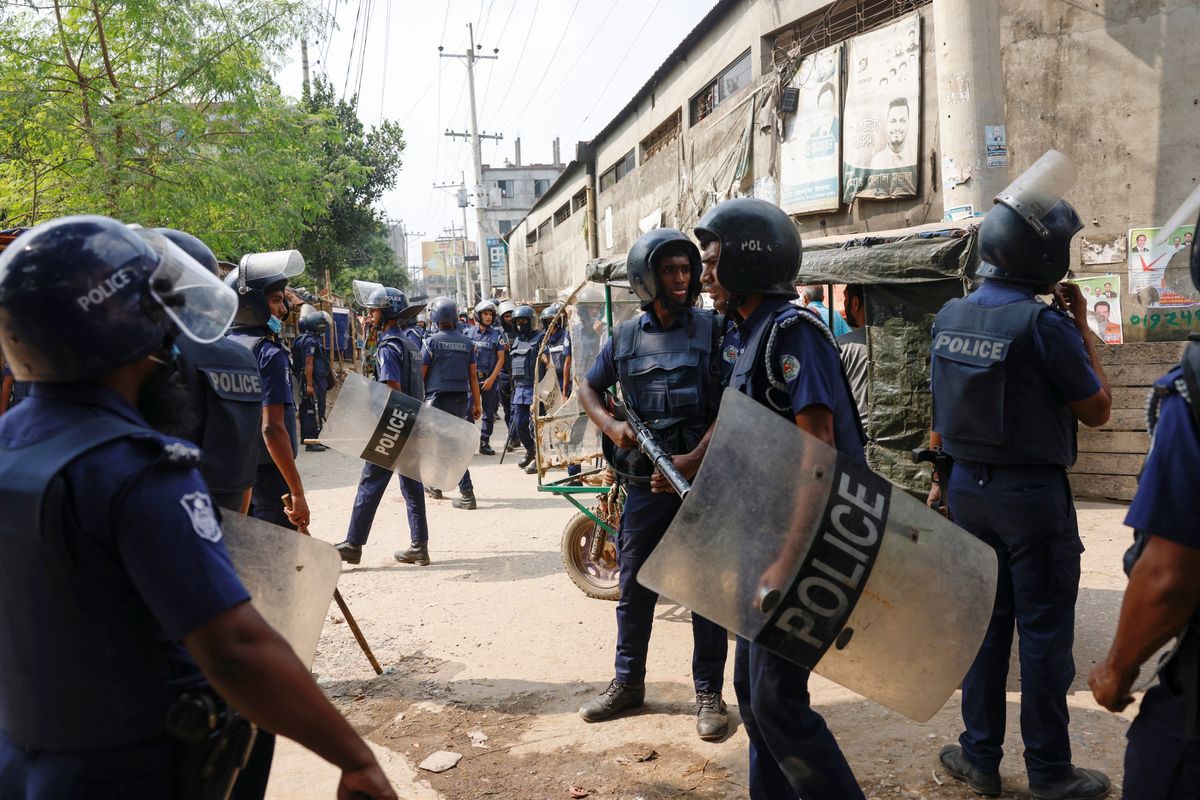Wage protests in Bangladesh lead to lukewarm changes
Garment workers in Bangladesh have been fighting for higher wages and better working conditions.

A few minutes every morning is all you need.
Stay up to date on the world's Headlines and Human Stories. It's fun, it's factual, it's fluff-free.
The backstory: The fashion industry, and especially fast fashion, relies on manufacturing in less developed countries, where companies don’t have to pay workers as much for labor. Bangladesh is well-known as a fashion development hub, with the garment industry making up over 80% of the country’s annual exports of about US$55 billion. The textile factories there are infamous for underpaying workers and having unsafe working conditions.
A garment worker in Bangladesh can expect to make as little as 8,000 taka (roughly US$72) a month. Even though clothing companies are raising consumer prices with inflation, this minimum wage hasn’t changed since 2018. And the lives and needs of Bangladeshi people have only become more expensive. But factory owners say that production costs have also gone up with higher energy and transportation costs.
At the height of the pandemic, over a million garment workers in the country lost their jobs or didn’t get paid after many global brands canceled billions of dollars of orders as stores had to shut down. Many people had to take out loans just to survive, which they’re still paying back. It’s typical in the country for them to work overtime just to survive.
More recently: Garment workers in Bangladesh have been fighting for higher wages and better working conditions. The Asia Floor Wage Alliance, which works with manufacturing countries in Asia, proposed a new minimum wage of 23,000 taka (about US$208) per month. Over the past few months, garment workers began protesting after the Bangladesh Garment Manufacturers and Exporters Association offered a minimum wage increase of 25% to 10,000 taka (US$90). For the past week or so, tens of thousands of workers have been demonstrating in the streets, with some of these protests becoming violent. Protesters have clashed with police, leading to at least two deaths and dozens injured. The government responded by pulling together a panel of factory owners, union leaders and government officials to figure out what they could do about pay.
The development: On Wednesday, Bangladesh announced a new minimum wage increase to put an end to the protests – 12,500 taka (about US$113) per month, with a 5% annual increase. This is a 56% increase in pay, but still not close to the Asia Floor Wage Alliance’s calculations for a minimum living wage. Wage board officials also raised the wages in four other categories by about 50%, but even then, the highest-paid category of workers would be paid only 15,000 taka (about US$135) a month. Union leaders aren’t happy with this news. They’re saying that they plan to continue their protests. The review period for the new wage increase is two weeks, with Prime Minister Sheikh Hasina giving the final word on the raise.
Key comments:
“It’s very hard for garment workers,” Nazma Akter, president of the Sommilito Garments Sramik Federation unions in Bangladesh and founder of the Awaj Foundation, told Vogue. “They’re working long hours [yet they’re still going] hungry.”
“We believe the proposed salary falls short of providing workers with the means to lead a healthy life,” said Prodip Ray, a leader of the Revolutionary Garment Workers Solidarity union.
“Garment workers should remember that if they damage factories, they may have to return to their villages and live without employment,” said Prime Minister Sheikh Hasina. “We are aware of who incited these protests and acts of vandalism, and we know which individuals from B.N.P. are involved.”




Comments ()